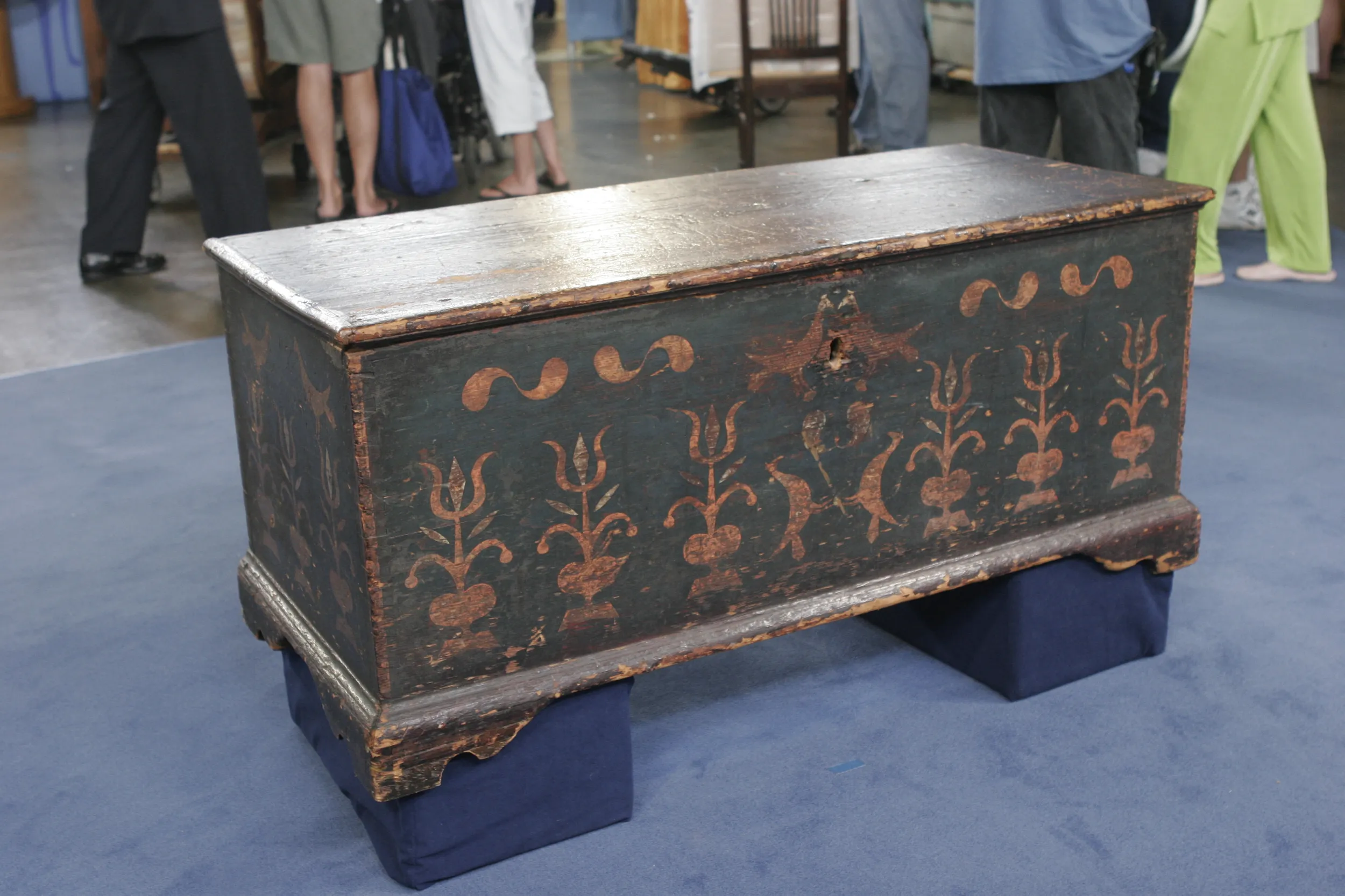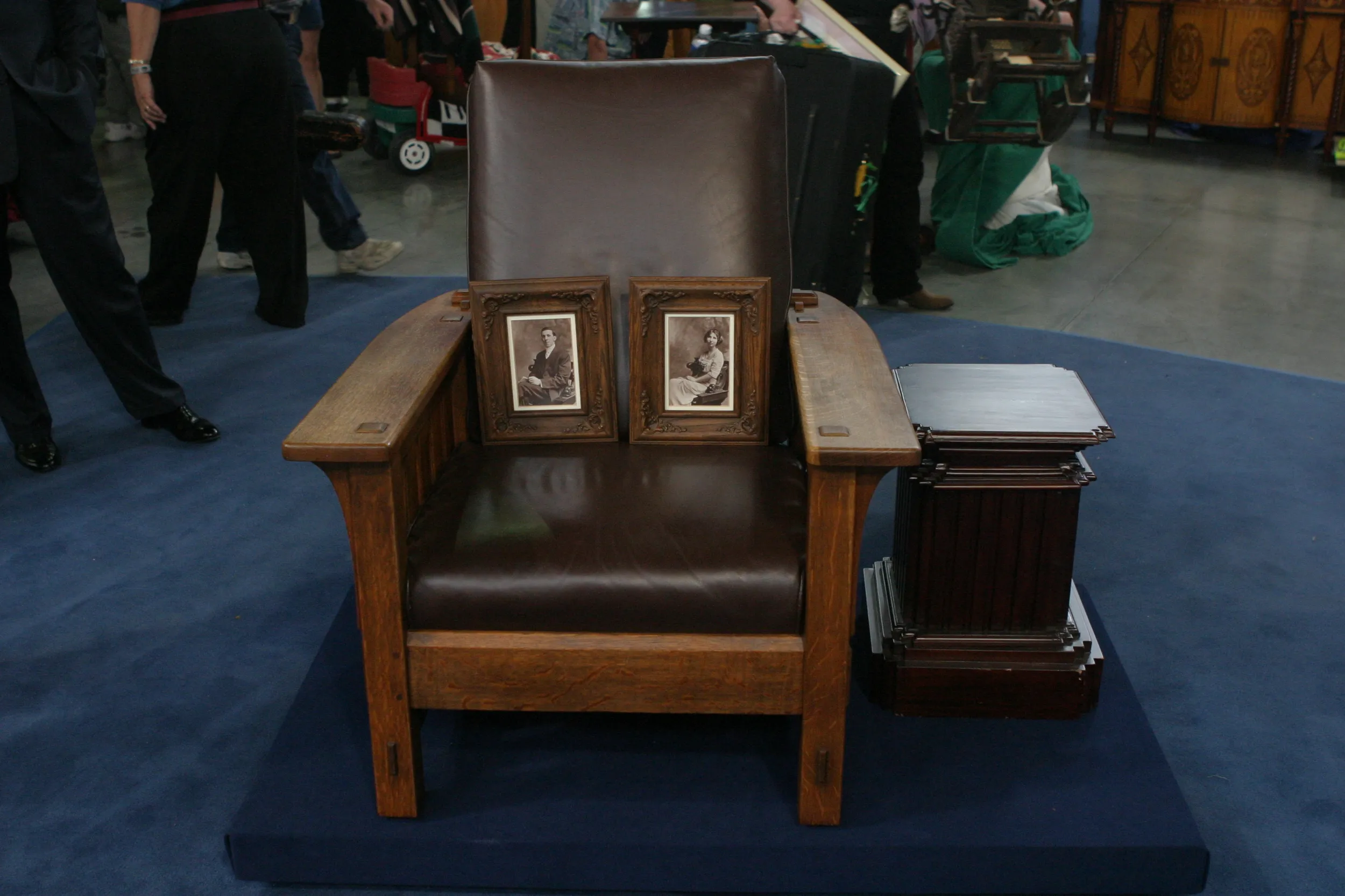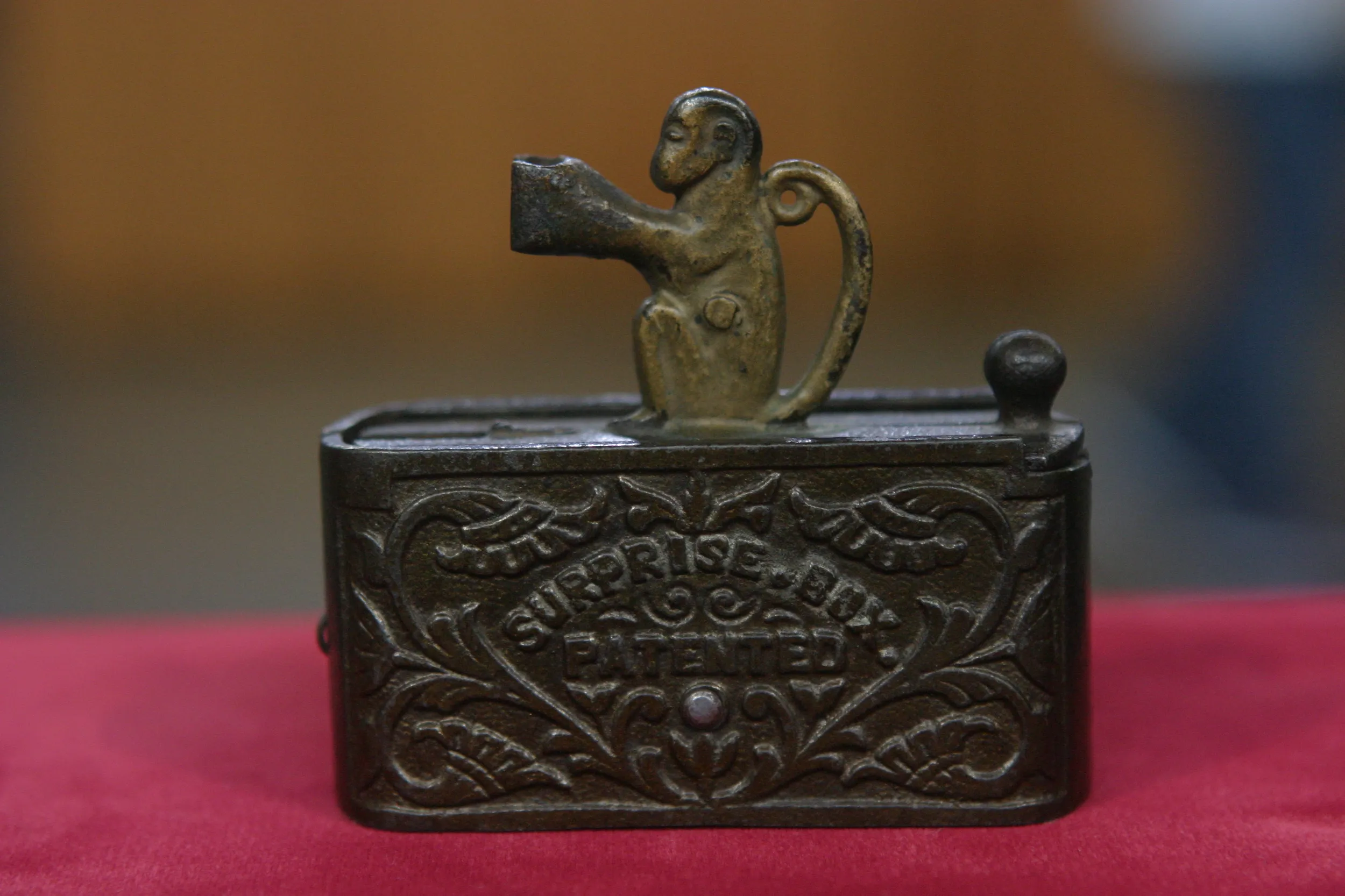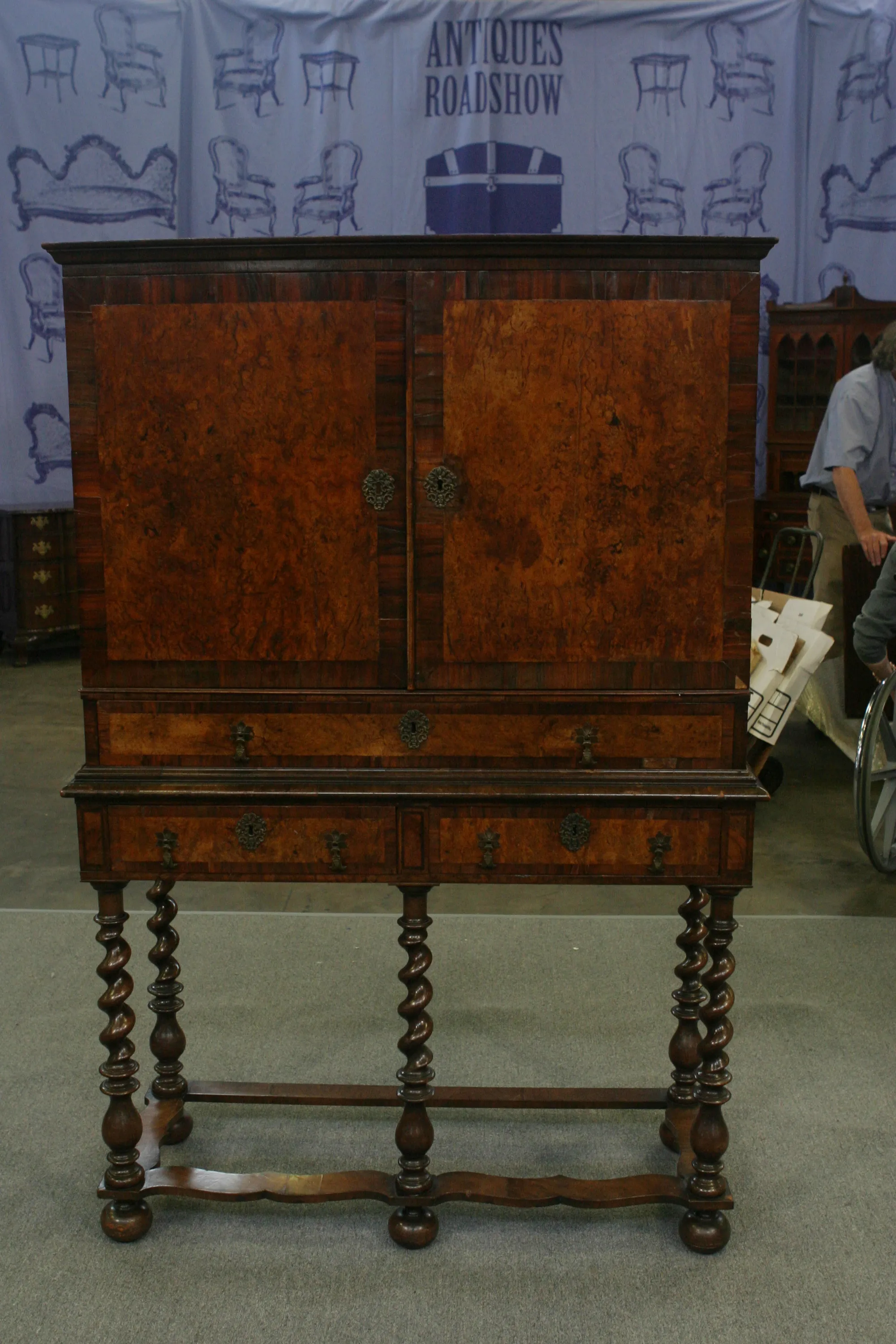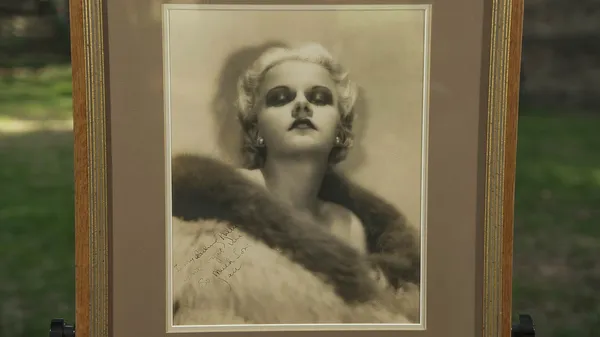GUEST: This bookcase was given to my grandfather when he was executive secretary of the YMCA in Portland. He came to Portland in 1896. At that time it was a very struggling organization. There'd been a recession, and a lot of YMCAs had gone out of business. And he basically built it into a pretty thriving organization.
APPRAISER: It's an Arts and Crafts piece of furniture...
GUEST: Mm-hmm.
APPRAISER: ...that was presented to this gentleman who was your great-grandfather.
GUEST: In 1902.
APPRAISER: His photograph is there, Mr. Stone.
GUEST: Yes.
APPRAISER: And then you also have this photograph. It identifies him as the cabinetmaker, right?
GUEST: Right, Mr. Stodley.
APPRAISER: And you don't know anything about him?
GUEST: I know nothing about him.
APPRAISER: I did a little bit of brief research this morning, and wasn't able to come up with anything either.
GUEST: Okay.
APPRAISER: I do think that this is an important piece of Oregon, Portland history, though. If we read across the top here, it says, "Infinite riches in a little room." And this is very much in keeping with the Arts and Crafts movement. Beneath that, we get these wonderful paned and beveled glass doors that open up with this wonderful hardware, and this great presentation. It's interesting that you don't see much presentation furniture. You see it in silver and so forth. And I wanted to read this. "To all to whom these presents come, greetings. "This gift to H.W. Stone is from ye hands and hearts of ye craftsmen and fellow laborers in ye YMCA, Portland, Oregon, Christmas Day, AD 1902." Oregon has a long legacy and heritage of furniture making.
GUEST: Yes.
APPRAISER: And furniture's riches also come from its timber and its lumber industry, which brings us to this bottom part. Underneath this shelf you can see this wood here, which is redwood. We can identify this by its secondary wood as a piece of Oregon furniture. And then you also have fumed oak, which was done... not necessarily a stain that you'll see here, but it was a steaming that would bring out the color from inside the wood, which is very much in keeping again with the Arts and Crafts style. It's not pure, it takes on different styles of the Arts and Crafts movement, but it's not what the connoisseurs would consider a pure form. Very important to Portland history, very important to you. I think if it went to auction, you would expect to reach maybe $2,500, $3,500 I think would be a fair and conservative estimate.
GUEST: Mm-hmm.


